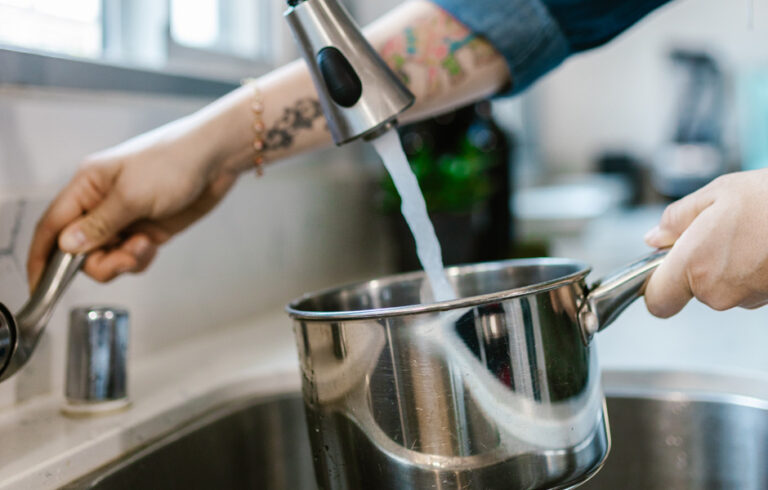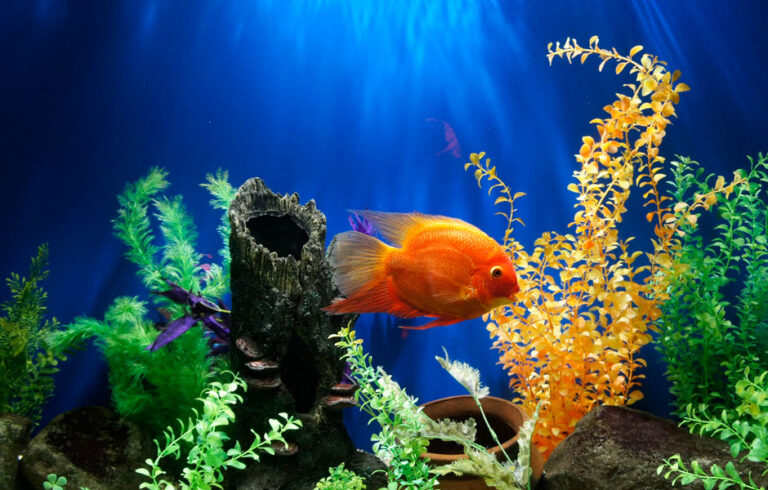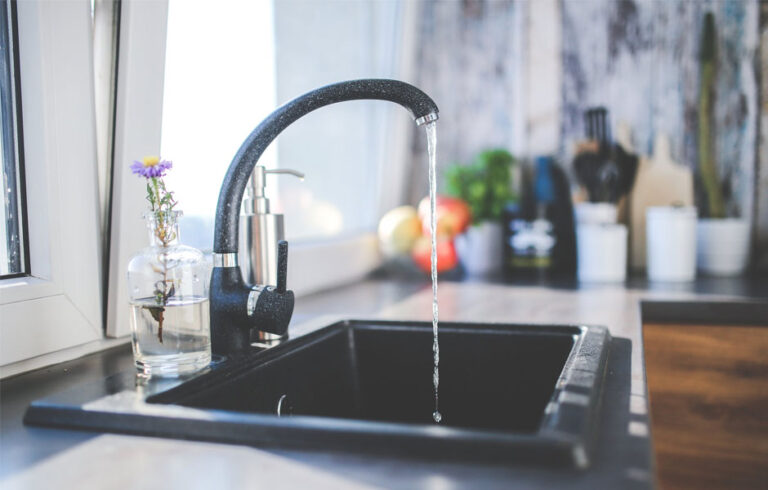This article not only highlights the many different signs of contaminated water, but it also looks at the reasons why it is unsafe to drink and how these issues can be resolved.
Many people do not know how their tap water reaches their home, and generally, there are two significant ways to do this. The first source can be through a private well, but most households receive water through their local council’s water supply due to the infrastructure present today.
It is a simple system where the city collects both surface and ground-level water, which is then filtered and treated at a water treatment facility. This process purifies the water and removes any chemicals, bacteria, and other contaminants, leaving you with clean water in your plumbing system at home.
However, this way of treating the water is not always enough to make it safe to drink. Contaminants can still make their way into your water by other means, as it has to travel a long way through numerous different pipes before it reaches your home, picking up unexpected bacteria along the way.
According to The Centre for Disease Control, contaminated water is a significant cause for concern, as it can cause a wide range of health issues such as; gastrointestinal illnesses, neurological disorders, and reproductive problems.
It is important to take action if you feel that your water may be contaminated. Most people are aware of the severity of drinking unclean water. However, be aware; it is not always evident that your water is contaminated!
6 signs of water contamination
To protect you and your family from drinking unsafe water, it is essential to monitor and check for the following signs of water contamination:
1. Cloudiness
As we all know, water is a clear liquid. So when it begins to look cloudy or discolored, it is a big sign that something is wrong. Water naturally contains many different minerals filtered out during the purification process, ensuring it is safe to drink. If these minerals are present, the water becomes cloudy, removing its purity and meaning it is no longer safe to drink.
Due to a lack of funding, municipal water filtration does not efficiently remove all of the minerals present in the water. If you notice a cloudiness present, it is a good idea to get your water tested.
2. Discoloration
Although, as mentioned before, your water should be clear, but can sometimes see a slight tint. It is crucial that if the water does have a color or stain, you stop consuming it right away, no matter how small. Brown or orange discoloration is often reported in contaminated water and indicates excessive iron or magnesium.
This is most often due to old and rusty pipes within your home plumbing system, but it can also be caused by mining or drilling taking place within proximity to the water supply. If you notice a discoloration in your water, immediately stop consumption and arrange for an investigation as soon as possible.
3. Chlorine smell
Drinking water should not have a smell and is generally odorless. Occasionally, a chlorine smell may be present in the water as, during the purification process, the water is treated with chlorine to kill any bacteria that may be present. Despite this process, there should never be enough chlorine present in your water to cause a smell.
If you notice a smell of chlorine in your water, no matter how distinct, you must get it tested, as it can be dangerous for you and your family’s health.
4. Sulfur smell
Sulfur is a naturally present chemical in the ground and therefore can often be found in small traces of your water. When the water is treated, it removes most of this chemical, so there should never be enough present that you can smell it.
High levels of sulfur can stress your intestines and lead to dehydration, making it very dangerous for your health! If your water smells like rotten eggs, endeavor to investigate this straight away. Fortunately, you can resolve this problem with increased filtration of water.
5. Unusual taste
A strong sign that your water is contaminated is if your water tastes different or unusual. We naturally have an instinct when something is not right, and our taste buds help us identify this by alerting us when something is harmful through taste.
If your water has a bitter or fishy taste or tastes oily or metallic, it could mean that there is bacteria or algae present in your water. This can be extremely harmful to your health and could result in you or your family feeling very unwell. Be sure to instantly stop consummation and report it to your city’s council.
6. Low water pressure
If your tap appears to be running slower than usual, your pipes are likely clogged. This is very common and occurs over time due to the corrosion of pipes and the build-up of limescale and sediment deposit.
This is dangerous because traces of sediment in the water can be harmful to you and your family’s health. In the event of pipe corrosion, the piping in your home will need to be replaced.
Solutions for contaminated water
One of the most effective and common ways of treating water contamination is to add additional filtration. This can efficiently solve most of the above issues and ensure that your water is clean and safe to drink.
Although there are many different water filtration systems available, it is advised that you consider a filtration system that can target multiple issues; this is both manageable and economical.
An excellent option to consider is a reverse osmosis filtration system because it is more effective in filtering out chemical contaminants than other methods such as deionization and distillation. With the monthly subscription option, one can avail pure drinking water at a low monthly rental cost.
In addition to this, you may have to contact your local city council for advice or to arrange for your pipes to be changed due to corrosion. The council will also inform you of any potential mining taking place close to the water source.
Conclusion: If you are concerned about the quality of your water or notice any of the contamination signs mentioned above, it is a good idea to get your water tested and invest in a water filter. Always discontinue the use of any water that you suspect could be contaminated, as the components within the water can be harmful to you and your family’s health.
This article was originally published in Jan-2021 and was last updated in Apr-2022
Author: Aby Richards
Category: Drinking Water




